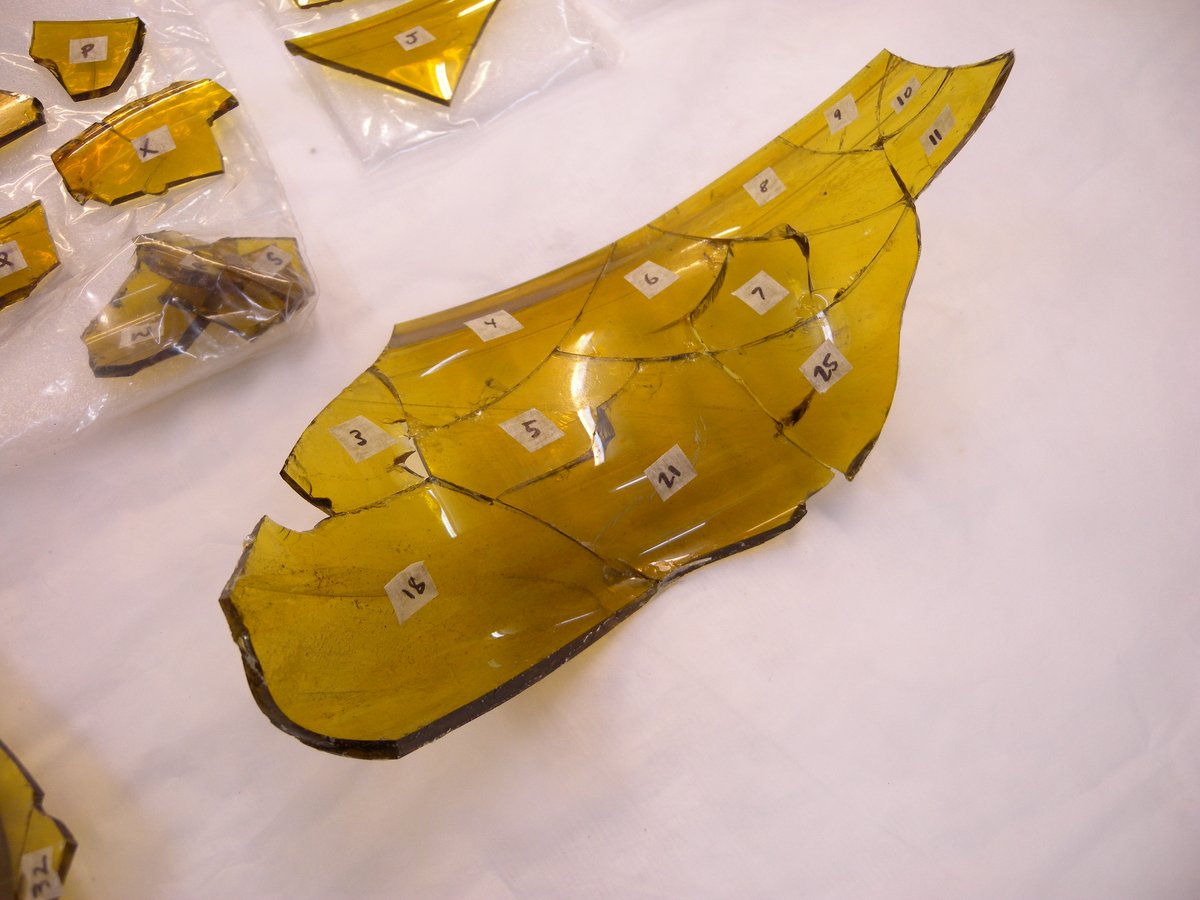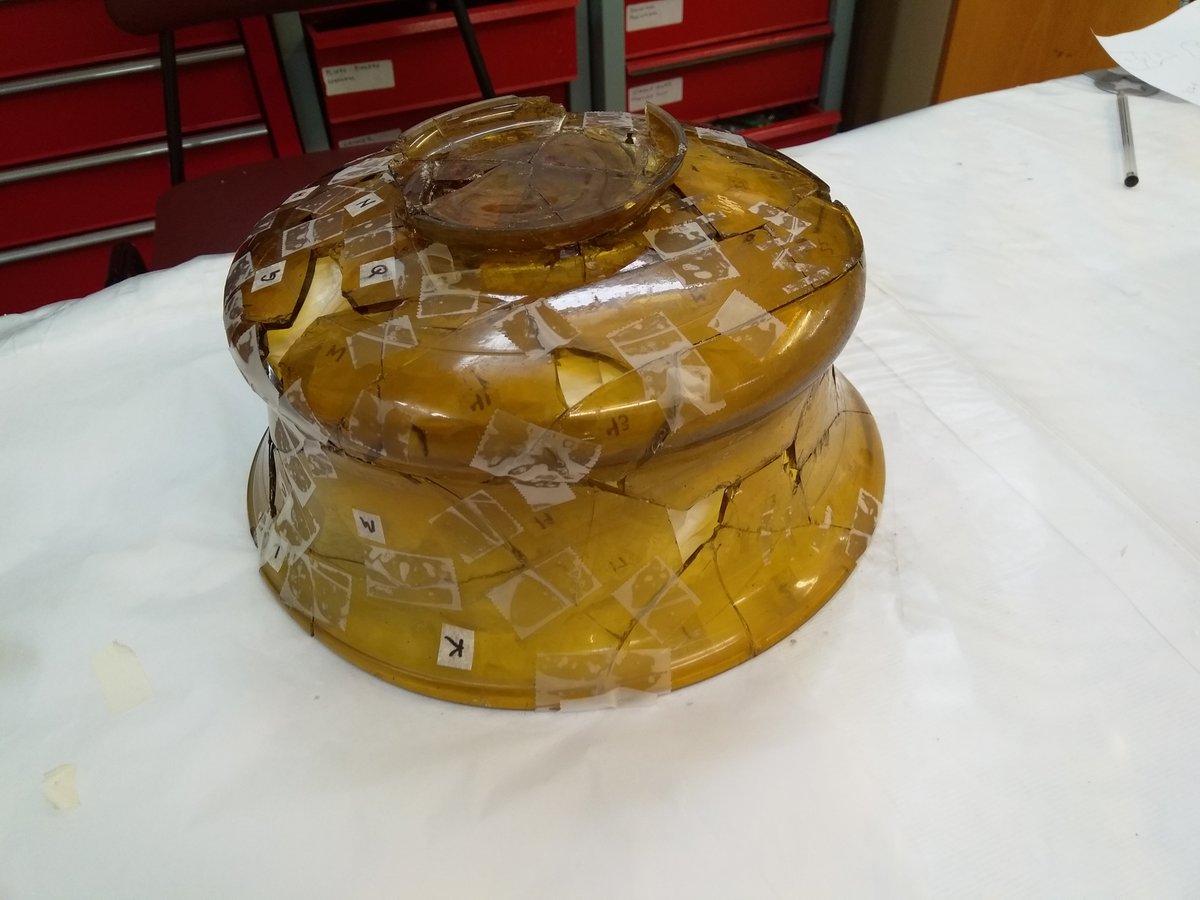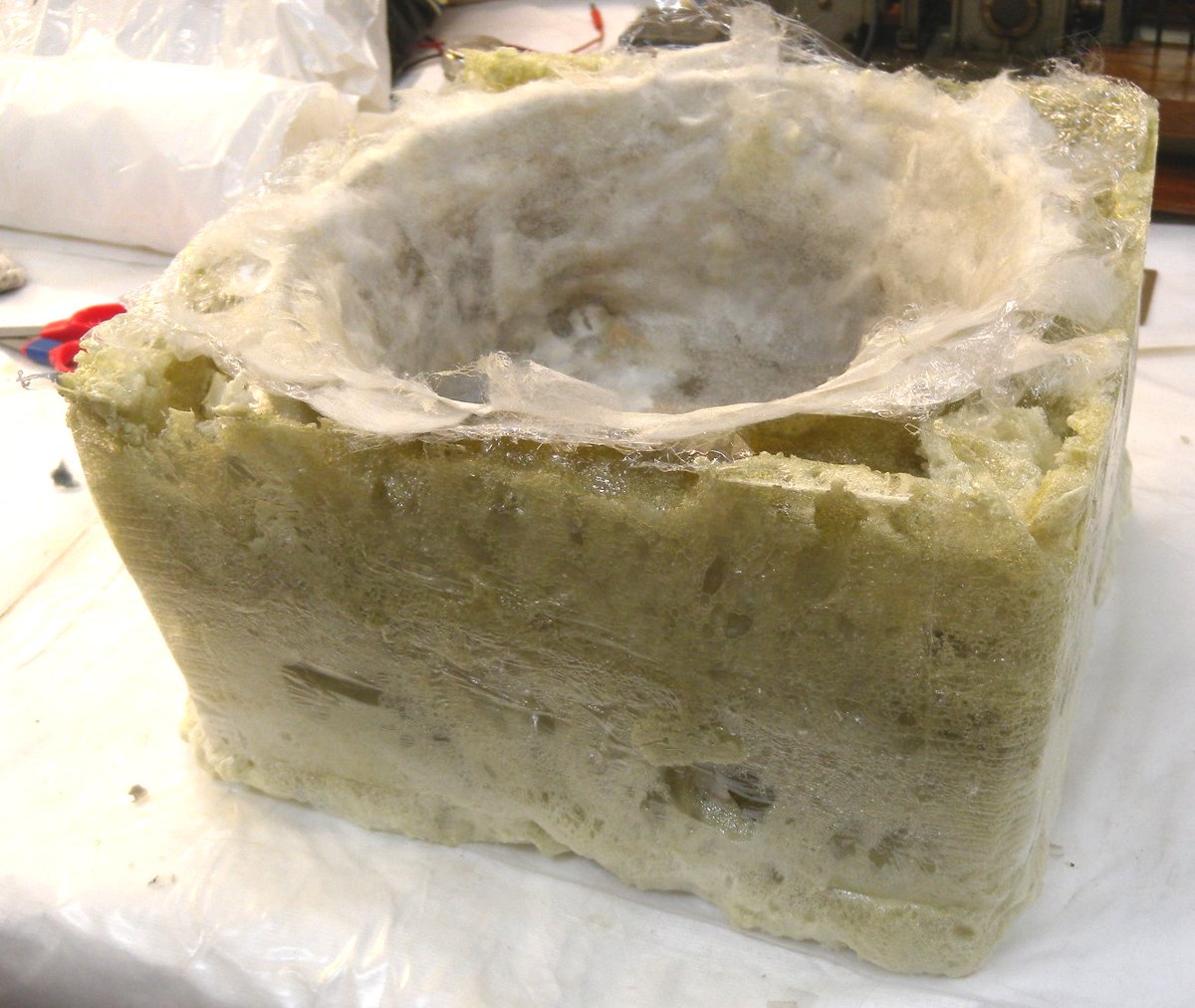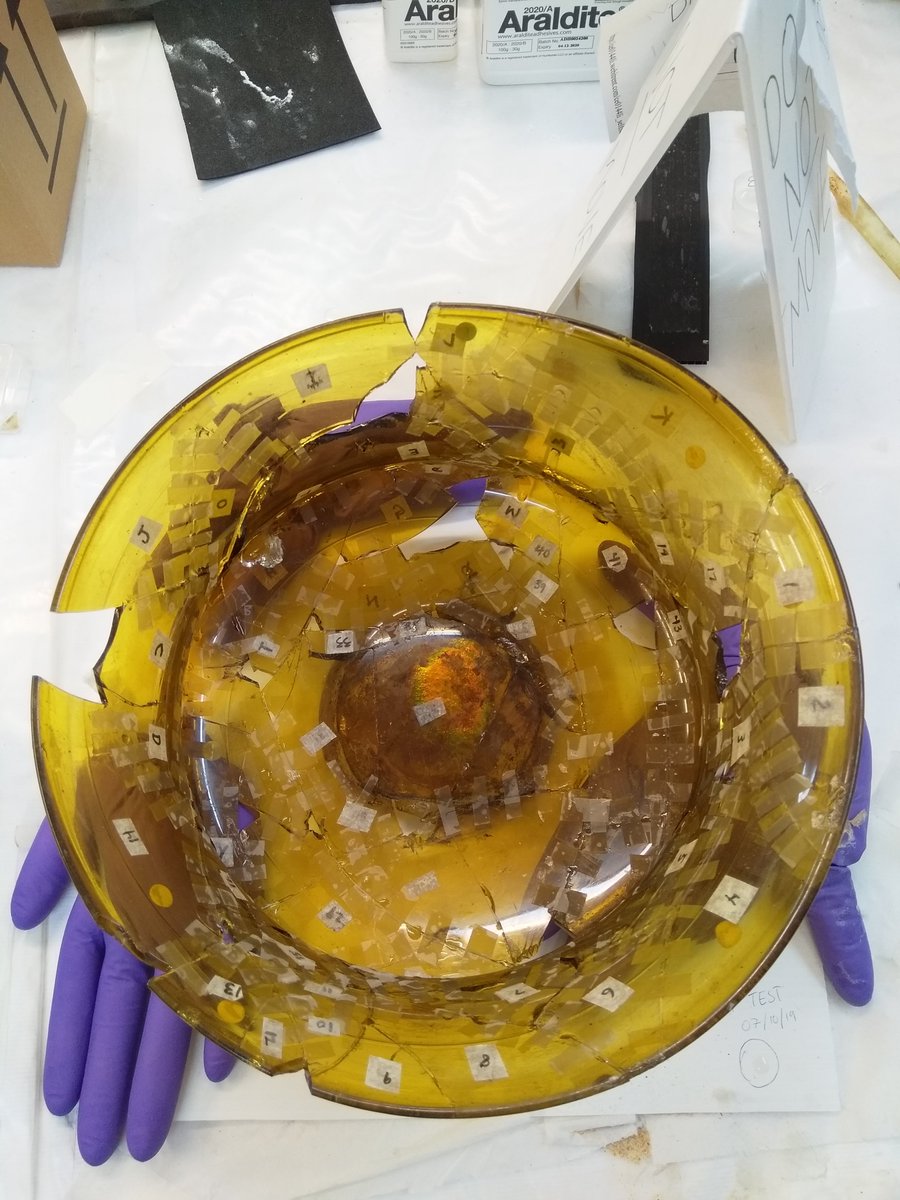1 #IconArchTC My name is Edward McGlinchey, tweeting via Bob Entwistle’s account. I am a conservation graduate of the University of Lincoln, currently working and volunteering at Colchester and Ipswich Museum service. To follow is my reconstruction of a Roman amber glass bowl.
2 #IconArchTC Excavated from the Stanway Warrior’s grave in the early 1990s and part of Colchester Museum’s collection, the bowl had previously been re-constructed several times. The most recent accident left the bowl in over 30 different fragments, some sherds still together.
3 #IconArchTC All break edges of the sherds were cleaned thoroughly with acetone applied using a cotton swab, removing old adhesive to ensure the best possible bond when re-adhering. A scalpel was also used to remove large deposits.
4 #IconArchTC The bowl was assembled in a dry run to ascertain how the sherds fitted together. This ensured that when finally assembled no sherds would be locked out. Individual sherds had already been numbered, and a photographic record was kept to aid in final assembly.
5 #IconArchTC Due to the size of the bowl it was decided a mould/support would necessary for final assembly. Some experimentation was done, with a mould of both the inside and the outside created to see which would be more useful.
6 #IconArchTC A mould of the interior of the bowl was made using fibreglass tissue and Paraloid b72 adhesive, the bowl wrapped in cling film to prevent adhesion. A mould of the exterior was made using expanding foam, the bowl placed in a square box and the foam surrounding it.
7 #IconArchTC The bowl was cut out of its exterior mould. It was then disassembled leaving the mould of the interior. The mould was cut from the rim to the centre to allow it to flex when needed, and be easily removed.
8 #IconArchTC The sherds of the bowl were then reassembled carefully and precisely, using magic tape strategically placed in thin strips bridging the joins intermittently. It was constructed upside down; the interior mould being used to support the sherds forming the base.
9 #IconArchTC Araldite 2020 adhesive was applied using a cocktail stick, leaving tiny drops along the join lines which was then drawn in via capillary action. Once the Araldite had cured, the mould and tape were removed along with any protruding excess adhesive using a scalpel.
10 #IconArchTC The exterior mould was used to create a secure storage/transit box for the bowl. The finished bowl is now back on display at Colchester Castle, along with other finds from the Stanway Warrior’s grave. A big thanks to Colchester and Ipswich Museum Service.

 Read on Twitter
Read on Twitter












